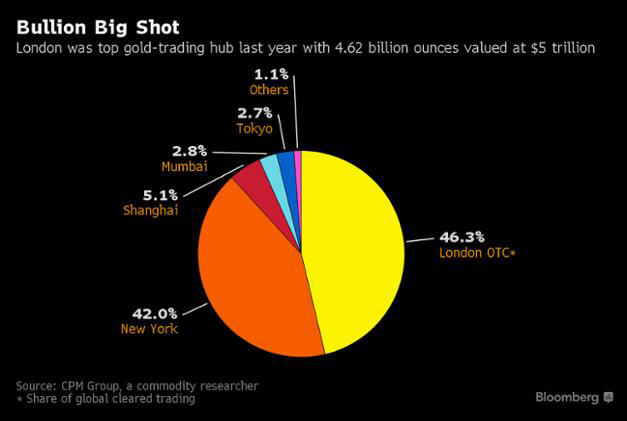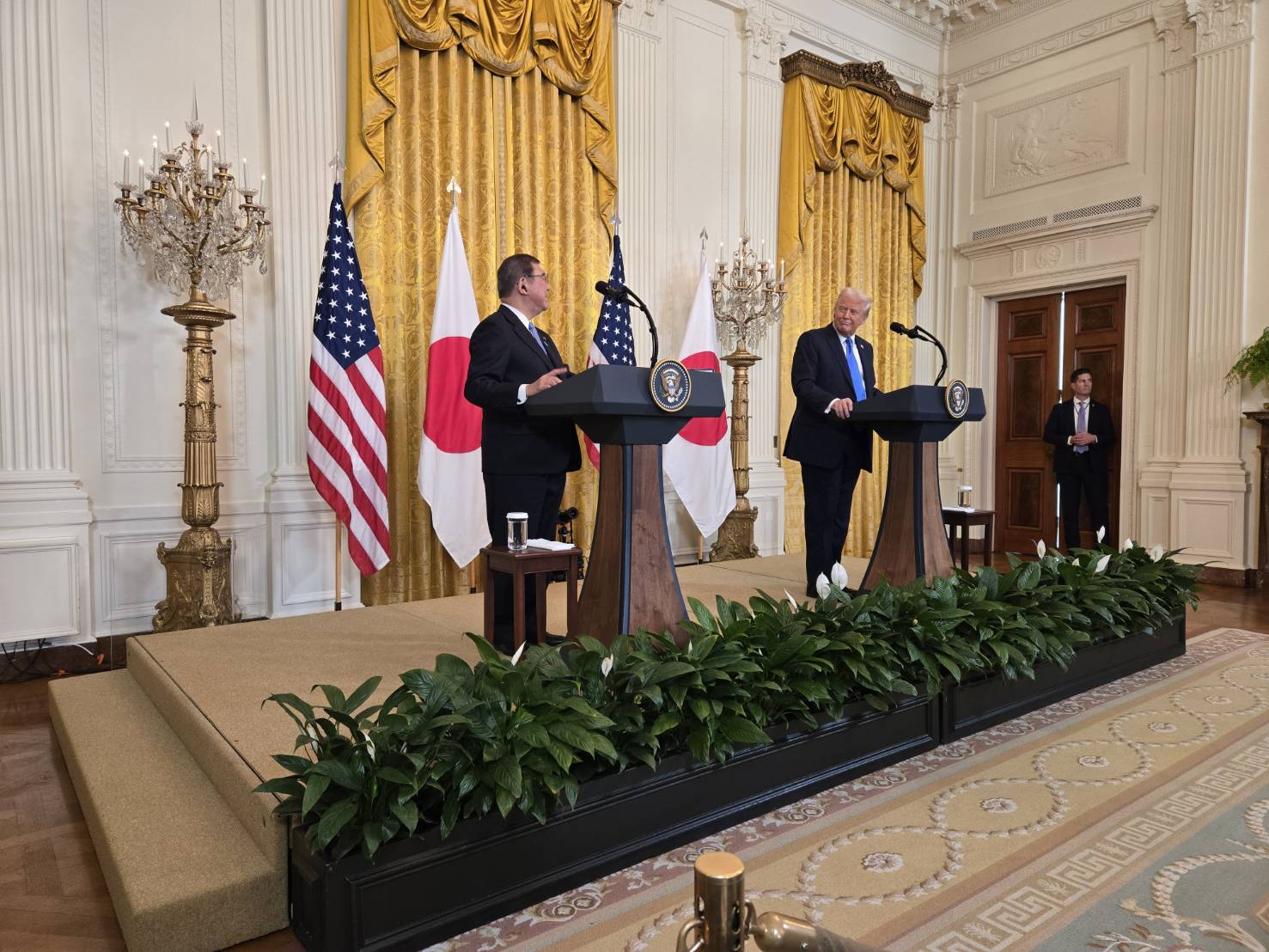What is the COMEX futures & options market really all about?

Let’s take a deep look into COMEX in this article that describes COMEX today.
All of us follow COMEX in New York and assess the ‘net speculative long position’ there, so as to see the actual weight of opinion on the gold price. It gives us a clear market opinion, after all. But many of you out there may believe that COMEX is a very large factor in the gold price. Should it be?
It would be easy of us or any other commentator to give their opinion on the matter, but would that be enough to be absolutely right? So as to not give an opinion, we felt it important to go direct to COMEX to get the proper story. We spoke to the Director of Metals Products in the COMEX Marketing Dept. This is what COMEX says;
What you may have thought about COMEX
It may seem reasonable to you to assume that the ‘net’ position on COMEX would be covered by COMEX actually ensuring that this amount of gold or silver is held in one of their four COMEX approved depositories that are all located in New York city. After all, delivery of the gold and silver is effected via electronic warrant.
This would reassure us that COMEX dealings did affect the gold or silver price, would it not? After all, supposing someone went short and could not deliver, who would supply the metals? The implications are that COMEX is constantly adjusting their gold & silver holdings to make sure that no-one would be left without the metal they bought there. Not so!
What really happens?
- Does COMEX hold gold or silver to cover the net position to ensure market players will get their metal?
– COMEX does not ensure the net long positions are covered by gold or silver. But, COMEX does perform oversight and regulatory due diligence, to ensure that no adverse events disrupt the marketplace to ensure that all market participants meet their contractual obligations. Yes, holders of COMEX approved depository electronic warrants can withdraw gold and silver from the depositories.
- So where do the sellers of gold or silver come from?
– The Exchange takes all short notices tendered and matches them to the appropriate long positions per an Exchange system algorithm. COMEX DOES NOT supply the gold. The Seller supplies the gold as part of the contract rules. The deliverable gold resides in four (4) COMEX approved depositories that are all located in New York City and the delivery of the gold is effected via electronic warrant. Find our warehouse stocks on a daily basis on our website: http://www.cmegroup.com/trading/energy/nymex-daily-reports.html
- So if a seller doesn’t have the gold to supply to the buyer, what happens?
– COMEX positions in spot (current) month Gold are settled by trading out (rolling) of the position or engaging in the Exchange delivery process. When someone wants to take delivery, they will establish a Long (buy) futures position and wait until a Short (seller) tenders a notice to delivery.
- Where does the gold come from, that’s held in approved depositories?
– Should you hold to delivery, you will get your gold! We match buyer and seller….one cannot exist without the other. The majority of positions are settled via trading as opposed to delivery. I cannot comment on where participants buy physical gold.
- So how is physical delivery made?
– The gold contract is physically settled, meaning if you stay to delivery you must deliver gold or you receive gold. If you trade out of your position or roll into other month you are paid or must pay the difference. You must know that less than 1% of the trades actually go to delivery.
- What if a seller [Short] does not have the gold to deliver [naked short]?
– If a short does not have Gold to deliver he must liquidate his position by the last trading day. A short which goes to delivery must have the Gold in an approved depository. This is represented by the holding of electronic depository warrants.
- What percentage of sellers are ‘naked shorts’
– Don’t know what percentage of shorts do not have physical gold and am not aware that any such statistics are kept. I imagine you could get some idea by looking at open interest and comparing that to registered  stocks [gold] in the depositories. [Go to the above website and check the totals against the Commitment of Traders report on Fridays and look at “Open Interst” to get that number.]
stocks [gold] in the depositories. [Go to the above website and check the totals against the Commitment of Traders report on Fridays and look at “Open Interst” to get that number.]
- Does the COMEX gold market directly affect the gold price?
– Our markets are used primarily for price risk management or financial reasons…..although we can be a source of physical metal we are not used for that reason. The Exchange does not set the price – the market does. The gold price is created by the buyers and sellers.
The exchange in no way determines the price….we only report it.
Conclusion on COMEX
The long and short of it is that COMEX is simply a ‘cash’ market that does not deal in gold or silver or other items at all. They simply provide a’ cash’ market where risks are laid off. Yes, physical dealers in gold and silver may well use the market to ‘hedge’ opposing real physical positions so that they don’t face a price risk and yes, traders [or gamblers] use the market to take leveraged, speculative positions that are in no way backed by the physical possession of the metals.
To see how a true “Hedger” uses COMEX see the experience below of one trader protecting himself and profiting by the sound use of COMEX
Gold Forecaster gives the Fundamental and Technical reasons behind the gold price in their weekly newsletter. Subscribe through www.GoldForecaster.com
How a true Hedger acts
 Many investors are puzzled by the importance of the COMEX Options & Futures markets on the price of gold.
Many investors are puzzled by the importance of the COMEX Options & Futures markets on the price of gold.
Take a look at the Diagram here [to enlarge it put your cursor on the corner and pull it diagonally] and you see that 86% of trading in gold Futures and Options takes place in London and New York.
Many may well believe that this translates into 86% of trading in gold [physical gold] takes place in these two centers. But this is not correct. The best way to illustrate this is to give you an example of a company that manufactures gold jewelry, as its main business.
This company needs to take delivery of a tonne of gold for the manufacture of jewelry between September and the November and then deliver it to retail jewelers. Its business is manufacturing only, but it finds itself at the mercy of a constantly moving gold price. These moves can be large enough to destroy profit margins.
The company cannot afford to suffer the risks on the gold price.
It is at this point that they need to turn to the COMEX Futures & Options to lose the risk of the gold price.
The head of the jewelry manufacturing company decides on when they enter the contract to buy the needed 1 tonne of physical gold. This may be at a time well ahead of September, the delivery date. He may believe that the price he can buy for is the lowest price he will see before September. So he goes ‘long’ of one tonne of physical gold just as he needs to be, so he can take delivery in September to get on with the business he is in. He does this by buying it on a bullion market, or from a refinery, or a bullion dealer.
But can he afford to take such a risk with such a changing price in gold? The price may drop before then and he is left with a cost that may prove too much for his business.
So he ‘hedges’ by selling a tonne of ‘paper’ gold on the Futures market. Now he hasn’t ‘zero’ positions, but one physical long and one short hedge position, but zero risk, as any losses he makes on one position will be covered by profits on the other position.
Now the price drops horribly. He then believes it has gone far too low, so he buys another tonne of paper gold on the Futures market and makes a profit [technical] from his short position. Now he is left with his original physical long physical position, a ‘hedged’ short position and a new long position. The effect of his profits on his short position has left him, in effect, with a much lower price on his physical long position.
But he has a risk position, nevertheless, as the net position is; two long and one short. But netting out these is what he started with. So now the manufacturer still wants to cover his risk, although his net price is lower than the price he originally paid.
He is willing to open another short position to remove all risks if the price rises again. The price then rises again so he does open a new short position. Now he has four positions, three of which are in the Futures market. Each time he makes a ‘profit’ on matching positions, in effect he lowers his entry price.
He is not speculating, in the modern sense of the word, as the only risk he really takes is on the original physical position.
It is not uncommon for such a hedger to have 50 plus positions against the original exposure. He doesn’t need a large change in price to continue increasing his positions. The reason it is not so speculative is that his original position needed hedging and subsequent actions are only undertaken when a profit is sure.
A speculator takes a view on the price itself with no underlying motive except price direction. He usually exposes himself to high risk that remains uncovered. Frequently, such traders take losses. We questioned one trading house, who informed us that even amongst professional speculators the success rate was only 52% at best amongst amateurs.
 This example helps one to understand that COMEX is not about gold supply and demand, simply about price. It is a money market separate from the gold market or the pork belly market.
This example helps one to understand that COMEX is not about gold supply and demand, simply about price. It is a money market separate from the gold market or the pork belly market.
It serves a vital function, but should not lead the gold price but follow it.
Now look at the diagram we featured here once more.
Legal Notice / Disclaimer
This document is not and should not be construed as an offer to sell or the solicitation of an offer to purchase or subscribe for any investment. Julian D. W. Phillips makes no guarantee, representation or warranty and accepts no responsibility or liability as to its accuracy or completeness. Expressions of opinion are those of Julian D. W. Phillips only and are subject to change without notice. Julian D. W. Phillips assumes no warranty, liability or guarantee for the current relevance, correctness or completeness of any information provided within this Report and will not be held liable for the consequence of reliance upon any opinion or statement contained herein or any omission. Furthermore, we assume no liability for any direct or indirect loss or damage which you may incur as a result of the use and existence of the information, provided within this Report.
{{ commodity.name }}
{{ post.title }}
{{ post.date }}


Comments